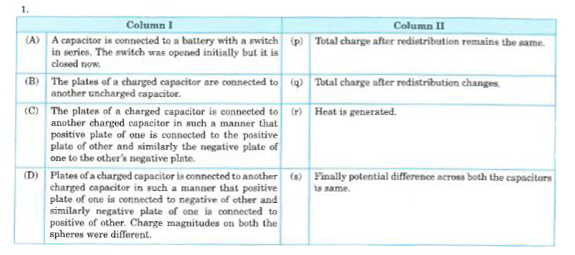Text Solution
Verified by Experts
The correct Answer is:
Topper's Solved these Questions
ELECTROSTATIC POTENTIAL AND CAPACITANCE
MODERN PUBLICATION|Exercise Competition file (INTEGER TYPE QUESTIONS)|10 VideosELECTROSTATIC POTENTIAL AND CAPACITANCE
MODERN PUBLICATION|Exercise Competition file (NCERT Exemplar Problems: Multiple Choice Questions Type-I)|6 VideosELECTROSTATIC POTENTIAL AND CAPACITANCE
MODERN PUBLICATION|Exercise Competition file (MATCHING TYPE QUESTIONS)|3 VideosELECTROMAGNETIC WAVES
MODERN PUBLICATION|Exercise CHAPTER PRACTICE TEST|14 VideosMAGNETISM AND MATTER
MODERN PUBLICATION|Exercise CHAPTER PRACTICE TEST FOR BOARD EXAMINATION|16 Videos
Similar Questions
Explore conceptually related problems
